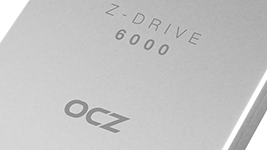The Z-Drive 6000 Series is built with performance, robustness and longevity in mind and supports PCIe 3.0 x4 connectivity with full NVMe 1.1b compliance and in-box operating system drivers.
According to IDC and its ‘Worldwide Big Data Technology and Services’ research, digital data will reach eight zettabytes in 2015 and forty zettabytes by 2020. With this amount of data generated and accessed, the performance requirement from storage devices has significantly grown. Archaic storage devices, such as spinning disks or hybrid storage, suffer through severe I/O bottlenecks that greatly hamper applications and services. Hence, flash based solid state storage adoption in datacenters and cloud services is on the fast track.
With an ever-growing gap between application performance requirements and hard disk drive (HDD) capabilities, PCIe-based SSDs are becoming highly desirable and represent a fast-growing multi-billion dollar global opportunity over the next five years. At present, PCIe SSD deployments are at an adoption stage (see Figure 1), but forecast is to achieve an estimated 2.75x growth in units shipped over the next 5 years according to TrendFocus market research. To achieve these forecasted deployment levels, new technologies must be developed that standardize and unify the storage stack, eliminate the existing proprietary driver model, and create a serviceable package.
With this opportunity, OCZ Storage Solutions introduces the Z-Drive 6000 SSD Series that builds on its proven Z-Drive technology, pairing next generation PCIe and NVMe (Non-Volatile Memory express) technologies with robust reliability and an extensive feature set. The portfolio is available in multiple configurations – offering different form factors, capacity points, and endurance ratings to suit a wide range of applications and ecosystems as presented over the next few pages.
NVMe Overview
Today’s enterprise compute platforms support up to forty lanes of the Generation 3.0 PCIe interface, where each lane has a theoretical bandwidth under 1GB/s. The reduced interface overhead and proximity of PCIe endpoints to the CPU allows PCIe-based SSDs to take advantage of extremely low latencies and high bandwidth not possible with SAS or SATA interfaces. Traditional PCIe flash storage devices offer high performance and high capacity but require proprietary software support. The NVMe specification extends traditional PCIe flash storage to new levels. Architected and optimized from the ground up specifically for non-volatile memory based solid-state storage, NVMe features a streamlined memory interface, command set and queue design that is well suited for today’s virtual operating systems. These features result in faster access to critical data and highly resilient storage capabilities. The NVMe host control interface allows for both system builders and storage vendors alike to develop the different parts of a storage ecosystem to the same specification enabling broad interoperability between storage devices, host platforms and supporting software. NVMe is an ongoing development effort coordinated through an open industry consortium of over 90 members under the direction of a 13-company promoter group.
Understanding NVMe benefits
I/O requests in an enterprise ecosystem spend much of their time in the hardware infrastructure (that includes NAND flash media, the flash controller, the host bus adapter, related hardware, etc.), and only a small portion of time working through the software I/O stack. The NVMe standard streamlines the software I/O stack by reducing unnecessary legacy overhead and supporting multiple queues, and many more commands per queue than any other commonly used storage protocol as outlined in Figure 2. NVMe supports 64,000 commands per queue (as well as 64,000 queues) to enable extremely fast hardware responses especially when compared to the SAS protocol that can only support 254 commands per queue or the SATA protocol that supports 31 commands per queue.
Published tests results indicate that the Linux NVMe software stack reduced software overhead by more than 50% (from 6µs to 2.8µs) when compared to a Linux SCSI/SAS software stack.1
The number of instruction cycles was also reduced from 19,500 to 9,100. From an SSD vendor perspective, the NVMe interface has a number of benefits. First, standardization makes the development effort easier with a common protocol between client and enterprise, as well as a plethora of optional features that open many new opportunities for firmware differentiation. Second, protocol efficiency streamlines the I/O stack to reduce stack latency as extensive queue depth and queue quantity support the inherent parallelism of flash based storage. Third, the implementation of a Data Integrity Field (DIF) delivers redundancy checks for transmitted read/write errors initiated by the host, which in turn, reduces system downtime as well as total operating cost (TOC).
Z-Drive 6000 SSD Series Overview
The Z-Drive 6000 Series is OCZ’s first NVMe-based SSD portfolio that addresses those enterprise applications requiring high-performance and low latency I/O responses coupled with the data protection, endurance and reliability that IT managers expect in enterprise environments. The series / models that comprise the Z-Drive 6000 SSD portfolio include the following solutions: The Z-Drive 6000 Series is built with performance, robustness and longevity in mind and supports PCIe 3.0 x4 connectivity with full NVMe 1.1b compliance and in-box operating system (OS) drivers to ensure broad interoperability and performance.
Enterprise / Datacenter optimized drive
The performance delivered by the Z-Drive 6000 SSD family is designed to fulfill the stringent requirements of OEM customers for enterprise-class centralized storage systems, server caching applications, VMware vSphere virtualized applications, and other applications that require high I/O performance and low latencies. The portfolio offers many benefits for enterprise-class deployments:
Applications supported
The Z-Drive 6000 NVMe-based PCIe SSD Series delivers extraordinary steady state performance to support applications that require large amounts of low-latency, high-bandwidth storage.
Summary
OCZ’s premium enterprise-class Z-Drive 6000 SSD Series portfolio are cutting edge PCIe/NVMe drives with exceptional performance and lowest latency in its class that supports SFF and AIC form factors, read-intensive and mixed workload applications galore, and enterprise-class endurance and data reliability for any business looking to overhaul or simply improve their data storage systems.
Additional information on the Z-Drive 6000 SSD Series, as well as OCZ’s complete line-up of enterprise SSDs and software solutions are available at www.ocz.com/enterprise.
Footnote References:
1 – “First NVMe SSDs Announced,” Dennis Martin, Storage Newsletter, September 20, 2013.
Additional References:
“NVMe Powers SSDs in the Enterprise,” Kam Eshghi, EE Times, November 27, 2012
“Introduction to NVMe Technology,” OSR Consulting, The NT Insider, Nov./Dec. 2014 issue
“Why NVM Express,” NVM Express, http://www.nvmexpress.org
“NVM Express,” Wikipedia, http://en.wikipedia.com/wiki/NVM_Express
More around this topic...
In the same section
© HPC Today 2024 - All rights reserved.
Thank you for reading HPC Today.




























